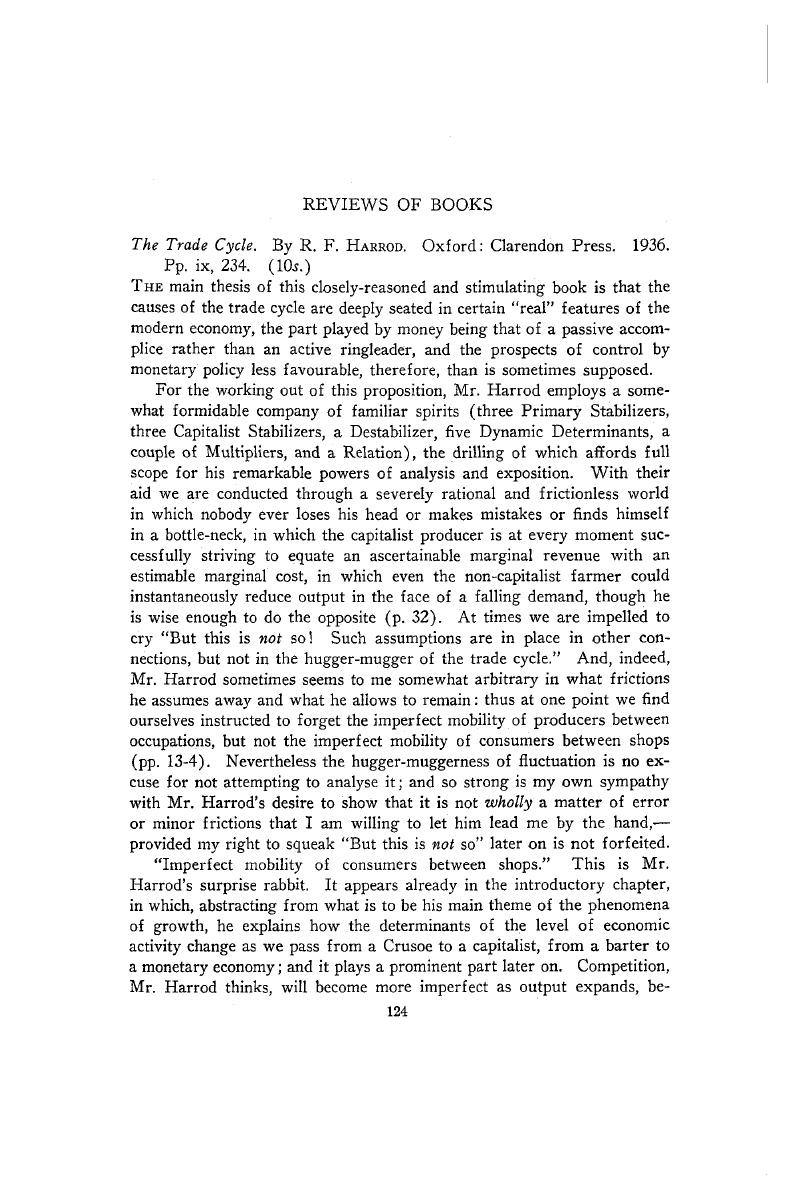Published online by Cambridge University Press: 07 November 2014

1 Pigou, A. C., Theory of Unemployment (London, 1933), p. 135.Google Scholar Why does Mr. Harrod say that “it is generally believed” that in a depression the prices of goods produced under imperfect competition fall more than their marginal costs?
2 Mr. Harrod's whole handling of this well-worn terminological wrangle about saving and investment seems to me open to serious criticism. I am tempted to make merry over those almost Athanasian “two magnitudes which are but one magnitude” (p. 163), denned apparently, though with the aid of a strange mixture of real and monetary concepts (p. 61), so as to be as identical as an elephant's trunk with its proboscis, yet causing so much pother in “accommodating” (p. 74) the proboscis to the trunk that if the two really are equal we shall know, not simply that we are not in a lunatic asylum, but that a hitherto declining total income has ceased to decline (p. 101). But I will only ask gently why Mr. Harrod persists in attributing a “guilty fallacy” (p. 68) to those who have preferred a less slippery method of approach.